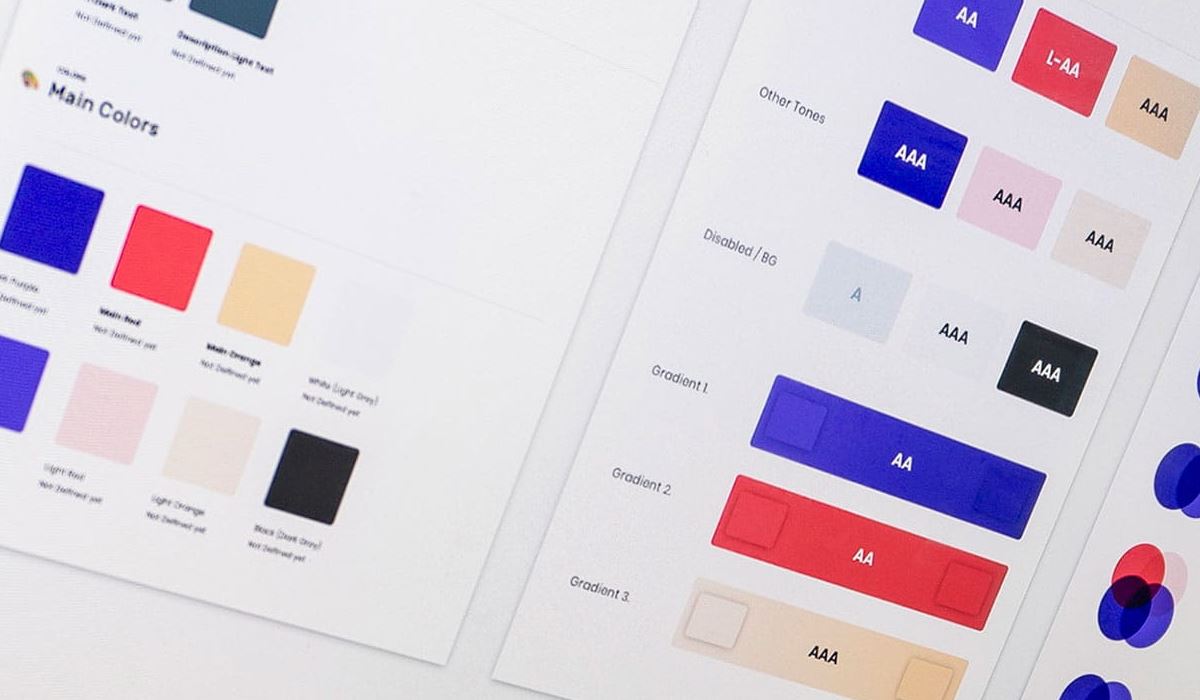VTEX Styleguide is the design system for VTEX, serving as the home for all reusable patterns, components, and assets related to product design.
Why We Should Pay Attention to Design Systems and How They Impact Our Designs

Design systems are becoming more and more prevalent in the UX world. In fact, Google Trends shows that searches for “design system” have increased by over 750% in the last three years alone. If you aren’t familiar with what a design system is, let me break it down for you. A design system is essentially a collection of assets (e.g. illustrations, icons, patterns, fonts) that are used to streamline and document the visual language of a brand or company across multiple user-facing interfaces such as websites or mobile apps. In this blog post, we will be exploring why we should pay attention to design systems and how they impact our designs. Let’s get started!
Why We Should Care About Design Systems
Before we get into the nitty-gritty, let’s discuss why we should care about design systems in the first place. Design systems are a key factor in creating consistent user experiences. By using a design system, we can ensure that the brand and user experience is consistent across all interfaces. If you are designing a customer-facing interface, it’s important to show the user that you know what you’re doing and how you do it. A design system also allows for a more efficient work process by providing designers and/or developers with a go-to library of assets. This means that if you have to redesign, update, or create a new interface, you don’t have to start from scratch. You can use the assets in the design system to create new interfaces with less effort. Design systems also help create a more cohesive and branded experience with the customer. They make it easier for people to understand what your company is all about and what they can expect from your product or service. Having a design system in place is an excellent way to get your brand up-and-running quickly and effectively.
Why are design systems important?
Design systems not only help to create consistent and branded user experiences, but they also make design easier. A design system can include everything from the colours used in the brand to the font types or even the imagery or icons used. This means that a designer can easily pick up where another designer left off and create something brand new from a preexisting design system. Design systems also allow for a more collaborative environment within a company. They make it easier for designers to collaborate with one another and with developers, who will also appreciate being able to easily access and work with a centralized design system. This means that communication and timelines are shorter because there’s less back-and-forth about what is being used and where it’s located.
Why Should We Care About Design Systems?
Now that we’ve discussed why design systems are important, let’s talk about why they should be a part of your daily life as a designer. Design systems are important because they allow you to be more consistent with your design and they also allow you to put more time and energy into creating new assets. When everything is centralized and organized, it makes it a lot easier to find what you’re looking for and create new designs. Another reason that design systems are important is because they allow you to create a more aesthetic and branded website or app. They help you to stay true to the colours and imagery that are used in your brand and allow you to create everything from colour swatches to typography quickly and easily.
Drawbacks of design systems
A major drawback of design systems is that they can sometimes stifle creativity and innovation. In some cases, a design system is so well established that it can be hard for designers or developers to deviate from the norm. Design systems can also sometimes be too centralized, making it hard for designers to make adjustments where necessary. Another drawback of design systems is that they can result in less-than-optimal experiences for users. If a design system is poorly thought out or poorly executed, it can create an inconsistent brand experience and an inconsistent user experience. Design systems are meant to help create consistency, but they can only do so when they are carefully thought out and implemented.
What is included in a design system?
The exact contents of a design system will vary from one organization to the next, but there are some things that are almost always included: - Brand guidelines - These are the core tenets of the brand and are often a starting point for all other visuals. - Colour palettes - There are two main types of colour palettes that you’ll see in most design systems: brand colour palettes and mood or tone palettes. - Pattern libraries - These are visual or textual representations of the brand’s visual language and are used to create consistent user experiences. - UI libraries - These are the visual representations of the functionality of an interface. They include things like buttons and menus. - Icon libraries - These are visual representations of brand-related terms and can be used to create consistency across an interface.
How do Design Systems Impact Our Designs?
When you are working with a design system, it’s important to remember that a design system is not a finished product. You can get some of your designs done really quickly by using the elements in the design system, but you need to remember that you are supposed to be customizing the design system to fit your brand. Design systems are meant to help streamline the design process, but they are not a brand or design in and of themselves. They are meant to be a baseline for all designs and provide a foundation for which you can create a consistent and branded experience. Now that we’ve discussed what design systems are and why they matter, let’s talk about when it makes sense to use a design system and when it doesn’t. Design systems are ideal for companies that have multiple different products or interfaces that use the same visual language. Design systems make it easier for designers to create one interface and then use that design across all other interfaces.
Conclusion
Design systems are an important part of creating consistent user experiences with brands. Design systems are meant to help streamline the design process by providing designers and companies with a go-to library of assets. Design systems allow you to create a more aesthetic and branded website or app by using the same visual language throughout the entire product. Design systems also help create consistent user experiences by making it easier for customers to understand what to expect from a product or service.









